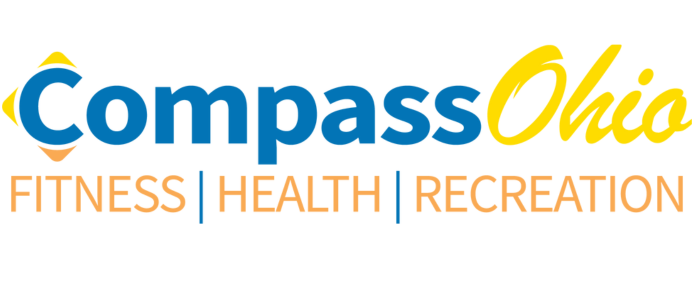
In my senior year of college, I discovered late fees at the school library when I checked out a book right before summer break. That’s right, I had every intention of reading it, but it was old and looked much less exciting than working out in the sun.
Little did I know, I would get hooked once I finally began reading this old book of research studies done in the 1960’s. The Physiological Effects of Exercise Programs on Adults was written by Thomas Kirk Cureton in 1969.
This book was research study after research study completed over a course of almost 30 years about what kind of exercise programs work, and what exercise programs don’t work. The part that gets me the most excited is that physical fitness has not really changed and, despite every new piece of equipment or exercise program, the same exercise that worked back then, still works today. No one had yet taken those exercises and put a company name on them and they weren’t being marketed to social media, they were simply using these exercise concepts for what they were.
They used different exercises to stimulate muscle growth, they used programs to see what gets our heart rate up, how to become more fit, and how to make our bodies the most efficient in daily life. No fads, no popular name-brand workouts, just the plain basics of science and exercise with long-term commitment to the programs. That’s the exercise that I love, the exercise that is backed by in-depth research and quantifiable results.

So, let’s talk about what works. What they found is that the most successful exercise program with the goal of increasing brain and organ function, overall fitness, and quality of life is through “high-intensity” workouts.
Your body is made up of around ten billion capillaries, tiny micro-sized blood vessels webbed throughout your body that bring nutrients and oxygen to your tissues. Not all of these capillaries are in use in every single person’s body. They actually have to be turned on by you.
The way we turn them on is by forcing our body to adapt to exercise or some kind of activity that creates enough stimulus to get our heart rate to the point where we need more oxygen. When you begin to push your body to adapt, you are also pushing blood into possibly forming new capillaries, but more so into making use of the ones you already have that aren’t being used efficiently. This will cause an increase in capillary density, allowing more oxygen to go to your muscles and thereby improving your ability to perform higher intensity exercise.

The more fit you are, the more capillaries are being used. When more capillaries are used, you are not only pumping blood to and from your heart and through your arteries more efficiently, but you are actually enabling nutrients and oxygen to get to the tissues of your body. This increases recovery, muscle build, fat loss, heart function, digestive regularity, brain function, and quality of life.
How do you know you’re hitting the point where you are becoming more fit? In a practical way of putting it, the moment that your body is sending you signals that it is not comfortable and thinks you should slow down, or quit, is actually the point where you are physiologically becoming more fit and a more efficient human being. This can be defined as heavy breathing or tired arms or legs. Don’t look to become uncomfortable to the point of pain or injury, and there is often a very fine line between the two.

This is why it is good to have an educated personal trainer or class instructor there for you to not only ask questions, but help you understand what you are feeling. It’s the point where you aren’t just burning, but where you are failing. It’s not “feel the burn,” it’s “overcome the fail.” Once you have begun to fail in exercise, you are not only getting fitter, you are getting used to the idea of growth. It’s time to get your mind out of the fat-burning zone and into the mindset of increasing overall fitness.
Getting on a treadmill at a pace that is conversational, or even slightly above conversational, is not doing the job. Yes, you’re burning calories, but if you have not pushed your heart rate into the zone that makes you suck air, you are not making your body more efficient. That’s how you continue to burn calories after high-intensity workouts, you have pushed your body to adapt and work thus creating your metabolic system to respond by becoming more efficient.

Doing high-intensity workouts every day isn’t necessarily smart, but pairing them with lower intensity cardio or weight lifting is definitely recommended. What you have to do to get results isn’t always fun, but once you do the work that isn’t so fun, the results are well worth it.
There are tons of ways to burn fat, but results are correlated with consistency. Consistently pushing yourself to the point where your body has to adapt and grow is the recipe for looking great and feeling great. High-intensity training is a piece to add to your workout regimen. There’s always that person that can start with four days a week of high-intensity workouts, but most should start with just two days a week. The main idea is to get you to push yourself on most days you work out.
You may also need rest days depending on how you feel. If you feel less recovered on a day when you should do high intensity, switch to something a little less taxing. Listening to your body and being flexible in your training plan is important.

Don’t be afraid to sweat and fail on some reps, or get out of breath and have to stop. That just means you should rest and keep going. Don’t settle for being comfortable because your body will not grow and adapt as it should. Get help from someone or join a gym if you aren’t sure how to get started.
Exercise is a complex concept and it’s important to find a trainer or instructor with formal education, certifications, and experience. Don’t be afraid to find a quality training facility and work hard. We applaud it, and we will help direct you to be as efficient as possible in your exercise goals.
Override Your Mind






